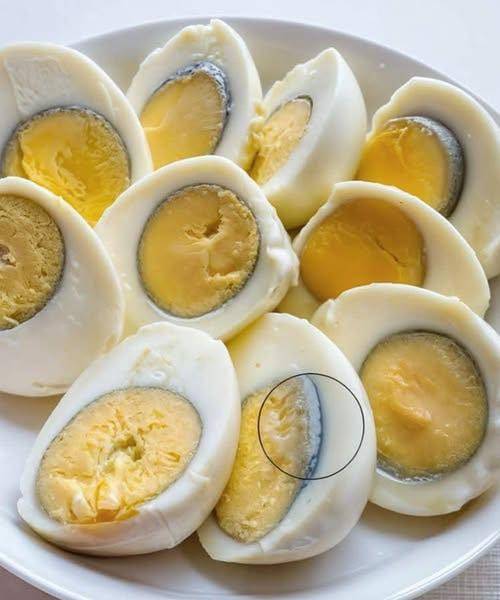The Chemistry of Cooking: Understanding What Happens When We Transform Food
Every time we step into the kitchen, we’re essentially conducting chemistry experiments, transforming raw ingredients through heat, time, and technique into something entirely different. Understanding the science behind these transformations not only makes us better cooks but also helps us troubleshoot common problems and achieve consistent results. From the proteins that coagulate when we cook eggs to the complex reactions that create flavors and textures, the kitchen is a laboratory where delicious discoveries happen daily.
The Fascinating World of Egg Chemistry
ADS 1
Eggs represent one of the most versatile and scientifically interesting ingredients in our kitchens, serving as a perfect example of how understanding chemistry can dramatically improve our cooking results. The structure of an egg is remarkably complex, containing multiple types of proteins, fats, and other compounds that react differently to heat, time, and various cooking methods.
The egg white, or albumen, consists primarily of water and proteins, with the most abundant protein being ovalbumin. When heated, these proteins undergo a process called denaturation, where their molecular structure unfolds and then coagulates, transforming from a clear, liquid state to the familiar opaque white texture we associate with cooked eggs.
The yolk contains a different set of proteins along with fats, cholesterol, and various compounds that contribute to both flavor and nutritional value. The lecithin in egg yolks acts as a natural emulsifier, which explains why eggs are so valuable in mayonnaise, hollandaise sauce, and other emulsion-based preparations.
Understanding these basic components helps explain why different cooking methods produce such varied results, and why certain techniques work better than others for achieving specific textures and appearances in egg dishes.
Temperature and Time: The Critical Variables
The relationship between temperature and time in egg cookery is crucial for achieving desired results while avoiding common problems that can affect both appearance and taste. Eggs are particularly sensitive to heat, with different proteins coagulating at different temperatures, creating a narrow window for optimal cooking.
Egg whites begin to set at around 140°F (60°C), while yolks don’t fully coagulate until they reach approximately 160°F (71°C). This temperature difference explains why it’s possible to achieve runny yolks with set whites, and why gradual heating often produces better results than rapid, high-heat cooking methods.
The duration of heat exposure is equally important, as prolonged cooking at high temperatures can trigger chemical reactions that affect both texture and appearance. Extended cooking times can cause proteins to become rubbery and can initiate reactions between various compounds that may produce off-flavors or undesirable visual changes.
Professional chefs often use precise temperature control and timing to achieve consistent results, but home cooks can apply the same principles by understanding how heat affects eggs and adjusting their techniques accordingly.
Chemical Reactions in Food: When Science Meets Flavor
Beyond eggs, numerous chemical reactions occur during cooking that transform ingredients in fascinating ways. The Maillard reaction, responsible for the browning and complex flavors in everything from bread crusts to seared meats, demonstrates how amino acids and sugars interact when exposed to heat to create hundreds of new flavor compounds.
Caramelization represents another important chemical transformation, where sugars break down and recombine under heat to create the rich, complex flavors associated with caramelized onions, crème brûlée, and countless other dishes. Understanding these reactions helps cooks control browning and flavor development in their cooking.
Protein denaturation occurs throughout cooking, not just in eggs, affecting the texture and digestibility of meats, fish, and plant proteins. This process explains why meat becomes firmer when cooked and why marinades containing acids or enzymes can “cook” proteins without heat.
Emulsification reactions create stable mixtures of oil and water-based ingredients, enabling the creation of sauces, dressings, and other preparations that would otherwise separate. Understanding emulsification helps cooks troubleshoot broken sauces and create stable, smooth preparations.
Water Activity and Moisture Management
Water plays a crucial role in cooking chemistry, affecting everything from texture to flavor to food safety. The concept of water activity describes how available water is for chemical reactions and microbial growth, influencing both cooking outcomes and food preservation.
Steam generation during cooking affects texture and appearance, with controlled steam helping create crispy bread crusts while excessive moisture can prevent proper browning. Understanding moisture management helps cooks achieve desired textures while avoiding common problems like soggy vegetables or pale baked goods.
Evaporation and concentration during cooking intensify flavors while changing textures, explaining why reduction sauces become more flavorful and why roasted vegetables develop concentrated sweetness. Managing water loss during cooking allows for better flavor control and texture development.
Hydration of starches and proteins affects everything from pasta texture to bread structure, with proper hydration being essential for optimal results in many cooking applications. Understanding these processes helps cooks achieve consistent results across various cooking methods.
pH and Acidity in Cooking
The acidity or alkalinity of ingredients significantly affects cooking outcomes, influencing everything from color retention in vegetables to protein structure in meats. Understanding pH effects helps cooks make informed decisions about ingredient combinations and cooking methods.
Acidic ingredients can affect protein structure, explaining why marinades containing vinegar or citrus can tenderize tough cuts of meat. However, excessive acidity can also cause proteins to become tough or create undesirable textures in certain preparations.
Alkaline conditions can affect color in vegetables, helping maintain bright green colors in some cases while causing undesirable color changes in others. Baking soda’s alkaline properties explain its effectiveness in certain applications while highlighting why too much can create off-flavors.
Buffer systems in foods help maintain stable pH levels during cooking, but understanding how different ingredients affect acidity helps cooks make adjustments that improve both flavor and appearance in their dishes.
Timing and Sequence in Cooking
The order in which ingredients are added and the timing of various cooking steps significantly impact final results. Understanding these timing relationships helps cooks develop better instincts about when to add ingredients and how to sequence cooking steps for optimal outcomes.
Heat penetration rates vary significantly between different ingredients, with dense vegetables requiring longer cooking times than delicate herbs. Understanding these differences helps cooks time their preparations so that all components finish cooking simultaneously.
Flavor development often requires specific timing, with some flavors needing time to develop while others can be lost if exposed to heat for too long. Understanding these timing relationships helps cooks layer flavors effectively while avoiding overcooking delicate elements.
Chemical reactions proceed at different rates depending on temperature, concentration, and time, making timing a crucial factor in achieving desired flavors and textures. Developing sensitivity to these timing relationships improves cooking consistency and quality.
Troubleshooting Common Cooking Problems
Understanding the science behind cooking helps identify and solve common kitchen problems before they ruin dishes. Many cooking failures result from misunderstanding the chemical processes involved rather than from lack of skill or attention.
Texture problems often stem from incorrect temperature control or timing, with proteins becoming tough from overcooking or starches becoming gummy from improper hydration. Understanding these relationships helps cooks adjust their techniques to achieve desired textures consistently.
Flavor imbalances frequently result from misunderstanding how different compounds interact during cooking, with some flavors becoming muted while others become overpowering under certain conditions. Knowledge of these interactions helps cooks make adjustments that improve overall flavor profiles.
Appearance issues, whether color changes, separation, or other visual problems, often have scientific explanations that point toward solutions. Understanding the chemistry behind these issues helps cooks prevent problems and achieve more appealing presentations.
Equipment and Technique Optimization
Different cooking equipment affects chemical reactions in various ways, with heat transfer rates, moisture retention, and temperature control varying significantly between different tools and methods. Understanding these differences helps cooks choose appropriate equipment for specific outcomes.
Cast iron’s heat retention properties make it ideal for certain applications while creating challenges in others. Understanding how different materials conduct and retain heat helps cooks optimize their equipment choices for specific cooking goals.
Non-stick surfaces affect browning and flavor development differently than traditional materials, with implications for both cooking techniques and final results. Understanding these differences helps cooks adapt their methods to their available equipment.
Pressure cooking, sous vide, and other specialized techniques create unique chemical environments that affect cooking outcomes in specific ways. Understanding these processes helps cooks utilize specialized equipment effectively while avoiding common pitfalls.
Food Safety Through Science
Understanding the science behind food safety helps cooks make informed decisions about handling, storage, and preparation methods that protect both flavor and health. Temperature control, pH management, and time limits all have scientific bases that inform safe cooking practices.
Bacterial growth patterns and destruction rates help explain why certain temperature and time combinations are recommended for food safety. Understanding these relationships helps cooks achieve safety goals while maintaining food quality.
Cross-contamination prevention relies on understanding how bacteria spread and survive on different surfaces under various conditions. Scientific knowledge informs effective sanitation practices that protect food quality and safety.
Preservation methods all have scientific explanations that help cooks understand why certain techniques work and how to apply them effectively. Understanding preservation science helps extend food life while maintaining quality and safety.
Advanced Cooking Techniques and Science
Modern cooking techniques often rely heavily on scientific understanding, with precision cooking methods requiring knowledge of exact temperature and time relationships. Understanding these scientific principles helps cooks master advanced techniques while avoiding common mistakes.
Molecular gastronomy represents the extreme application of cooking science, using scientific principles to create unexpected textures and presentations. While not necessary for everyday cooking, understanding these principles can inspire creative approaches to traditional preparations.
Fermentation represents another scientifically complex cooking process that can dramatically transform ingredients through controlled microbial activity. Understanding fermentation science helps cooks develop skills in bread making, pickling, and other fermented foods.
Smoking and curing rely on scientific principles related to preservation, flavor development, and texture modification. Understanding these processes helps cooks achieve desired results while maintaining food safety and quality.
Building Cooking Intuition Through Science
While scientific understanding provides a foundation for better cooking, developing intuition requires practice and observation that builds on scientific knowledge. The best cooks combine scientific understanding with sensory awareness and practical experience.
Taste development involves understanding how different compounds interact on the palate and how cooking processes affect these interactions. Scientific knowledge provides a framework for understanding why certain combinations work while others don’t.
Visual cues during cooking often indicate specific chemical changes that affect both safety and quality. Understanding what to look for helps cooks make timing decisions that improve their results.
Aroma changes during cooking provide information about chemical reactions and cooking progress. Developing sensitivity to these changes helps cooks optimize their timing and technique for better results.
Seasonal and Ingredient Variations
ADS 2
Natural variations in ingredients affect cooking chemistry, with seasonal changes, storage conditions, and ingredient quality all influencing how foods behave during cooking. Understanding these variations helps cooks adapt their techniques for consistent results.
Moisture content in vegetables and fruits varies seasonally, affecting cooking times and final textures. Understanding these variations helps cooks adjust their methods to accommodate natural ingredient differences.
Protein content and fat distribution in meats vary based on diet, age, and other factors that affect cooking outcomes. Knowledge of these variations helps cooks select appropriate cooking methods and adjust their techniques accordingly.
Storage conditions affect ingredient chemistry, with age, temperature, and humidity all influencing how ingredients behave during cooking. Understanding these effects helps cooks make informed decisions about ingredient selection and preparation methods.
Conclusion: Embracing the Science of Cooking
Understanding the science behind cooking transforms the kitchen from a place of trial and error into a laboratory for deliberate experimentation and consistent success. While cooking will always retain elements of art and intuition, scientific knowledge provides a foundation that helps cooks understand why techniques work and how to adapt them for better results.
The chemistry of cooking affects every aspect of food preparation, from basic techniques like boiling water to complex preparations involving multiple ingredients and cooking methods. By understanding these processes, cooks can troubleshoot problems, optimize their techniques, and create better dishes with greater consistency.
As cooking continues to evolve with new techniques, equipment, and ingredients, scientific understanding becomes increasingly valuable for navigating these changes and incorporating new methods effectively. The marriage of science and cooking continues to open new possibilities for both professional chefs and home cooks who want to understand and improve their culinary skills.
Most importantly, understanding cooking science enhances rather than diminishes the joy of cooking by providing insights that lead to better results and greater confidence in the kitchen. When we understand why our techniques work, we can focus more on creativity and enjoyment while worrying less about unpredictable outcomes.
 Fact Stream Daily
Fact Stream Daily



























